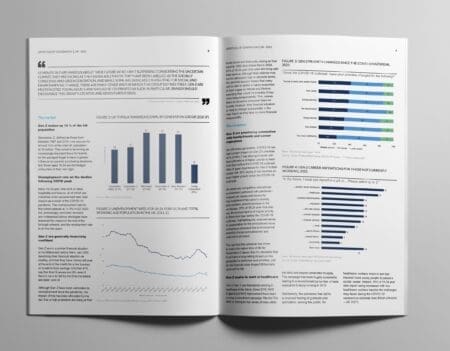Number of Brits interested in cycling doubles
It seems that Brits love of cycling has moved up a gear, as latest research from Mintel reveals that the number of Brits interested in taking up cycling in the future almost doubled in the last two years – up from just one in ten (10%) in 2014 to one in five (19%) in 2016. This increase in cycling’s popularity comes to the detriment of aerobic and fitness classes. Working up less of a sweat, the number of Brits planning to take part in aerobics or fitness classes has risen a more moderate five percentage points, up from 11% in 2014 to 16% in 2016.
While cycling is famed for its Mamils*, Brits most likely to aspire to cycle are those aged 16-24 (31%), with young women (33% of 16 -24 year-olds) more likely to aspire to cycle than young men (30% of 16-24 year-olds). By region, the draw of the bike is proving to be most popular for those living in the South West (24%) and North West (23%).
Overall, swimming is making the biggest splash in terms of sports which Brits would be most interested in participating in in the future. Indeed, the number of would-be swimmers has risen from 17% in 2014 to just over three in 10 (31%) in 2016.
David Walmsley, Senior Leisure Analyst at Mintel, said:
“Cycling and swimming both look to have benefited from the media exposure they enjoyed during the Rio 2016 Olympics, but they still face strong competition for new recruits as consumers are showing interest in a wider range of future sports than they did two years ago. That could mean we’re starting to see people move away from the recent fixation with maximising performance in a single sport – cycling being a prime example – and towards a less serious outlook that puts more emphasis on variety and fun.”
Currently, the top five sports which Brits are most likely to aspire to participate in in the future are swimming (31%), cycling (19%), aerobic or fitness classes (16%), yoga or pilates (15%) and weight training (15%). And with the nation’s celebrities set to conquer the Austrian slopes on The Jump, Mintel research reveals that, around one in twenty (6%) Brits is interested in skiing or snowboarding.
In terms of current participation, one in four (25%) of Brits has gone swimming in the past 12 months**, while 14% have gone jogging and 14% have cycled.
Of Brits who have played sport in the last 12 months, around half (47%) say that they take part in their main sport more than once a week. However, it seems that many in the UK prefer to watch from the sidelines as just over one third (36%) of all Brits say that they are not interested in playing or participating in any sports in the future – a percentage which has remained static since 2014.
All in all, it appears that Brits have a positive attitude towards sport, with two thirds (65%) agreeing that sport helps prevent health problems later in life, rising to 81% among those who are currently active.
“Brands don’t really need to sell the health benefits of taking part in sport any more – consumers understand the positive impact participation can have on physical and mental wellbeing. However, there’s a big difference between knowing something is good for you and actually acting on that knowledge. Our research shows that half of all adults still struggle with motivation, and almost the same number say they don’t have time to participate in sport, so providing solutions for getting past these barriers is now arguably the bigger challenge for sports brands.” David comments.
While around two thirds of Brits (64%) aspire to play sport in the future, sports participation rates appear to have slipped significantly between 2014 and 2016. Indeed the proportion of adults having taken part in sport over the past year is down from 64% of all Brits to just over half (56%) over this two year period.
And although activity rates held up among 16-24 year-olds (80% of whom had played some sport in the 12 months to July 2016), they witnessed a double-digit percentage point decline, falling from 78% to 65% among those aged 25-34 in this two year period.
“Our research suggests that it’s mostly among more occasional players that participation rates are dropping off, with those who are more committed showing far fewer signs of cutting back. If they want to reduce the likelihood of these casual players dropping out, sports brands need to do more either to encourage them into more frequent play or to strengthen their commitment to their current occasional involvement. If you can demonstrate the value in this type of ‘regular occasional’ game, it can become more of a fixture in their diary – and become a potential springboard into more frequent activity in the longer term.” David adds.
Finally, it seems that sports participants are leading the technology race. Almost four in 10 (37%) sports players own a device that tracks their athletic performance. The most popular products in terms of both current use and future interest are smartphone apps, with 20% of sports players having used an app to record activity, followed by pedometers (15%) and wristbands(13%).
“Sports participants have certainly bought into the potential of performance-tracking technologies, but so far are only scratching the surface. At the moment, ownership is skewed towards cheaper and more accessible products, such as smartphone apps, pedometers and wristbands, rather than more sophisticated devices like smartwatches, cycling computers and devices built into equipment and clothing. It seems that there is a job of education required to move users of performance-tracking technologies to more enhanced devices. Whether it’s through clubs, venues, retailers or brands, consumers need professional help firstly in understanding the data they produce and then in using that insight to develop their training regimes to help them make further improvements.” David concludes.
*Term first used by Mintel for “middle-aged men in lycra”
**12 months to July 2016
Press copies of Mintel’s Sports Participation UK 2016 report and interviews with David Walmsley, Senior Leisure Analyst, are available on request from the press office.
-
Mintel StoreGet smart fast with our exclusive market research reports, delivering the latest data, innovation, trends and strategic recommendations....View reports
-
Mintel LeapMintel Leap is a revolutionary new AI-powered platform that will transform your research process....Book a demo







































